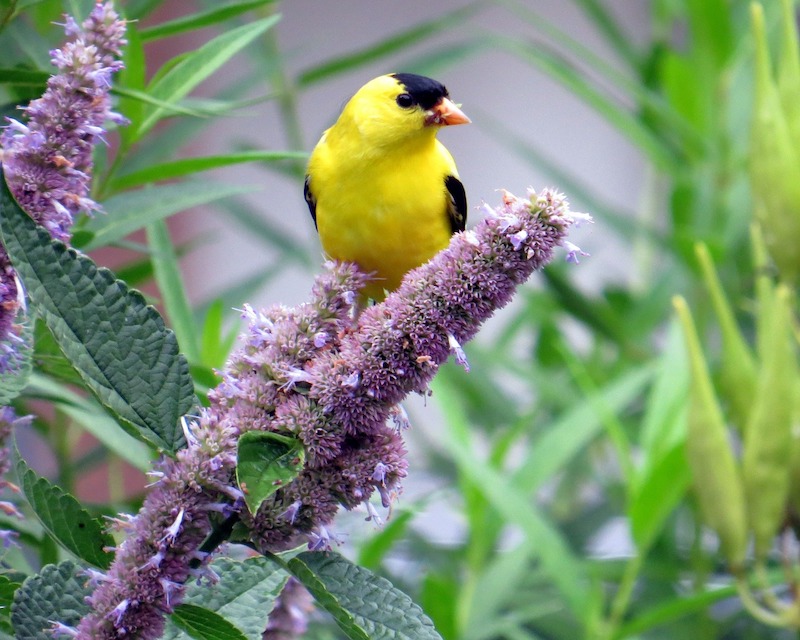Agastache is an edible member of the Lamiaceae (mint) family. The fragrant foliage and nectar-rich flowers are great additions to a summer salad or can be dried and used as the basis for an herbal tea mixture. The flavor of Hyssop, which is the more commonly known name for Agastache, is not overpowering and depending on the variety, will be a combination of licorice, anise seed, and soft mint. Agastache makes a lovely edible garnish and growing it as part of a kitchen garden or dedicated herb bed is a great way to attract beneficial pollinators to the area.

Is Agastache Poisonous to Children?
Children who eat or brush up against Agastache plants will rarely have a reaction. Babies and toddlers with more sensitive skin may show signs of contact dermatitis due to the levels of volatile oils in the foliage. Washing the affected skin with a mild cleanser and rinsing thoroughly is usually the only treatment needed. Ingesting large amounts of the top growth may cause stomach upset.
Is Agastache Poisonous to Dogs?
Agastache is not listed by the ASPCA as a toxic plant for dogs or other pets. Because it is in the mint family, it can cause intestinal upset for smaller dogs and puppies if large amounts are ingested. Dogs who are apt to chew on plants to help their digestion may be attracted to the crunchy stems and leaves of Agastache. Agastache and other mint plants are rarely a cause for concern if your dog nibbles a few stems or leaves.
Is Agastache Poisonous to Cats?
Although some mint family members such as catmint (Nepeta spp.) and catnip are safe for all cats to graze on, other mint plants in large amounts may cause stomach issues. Agastache can cause vomiting and diarrhea in cats who regularly eat large amounts of the foliage. Be aware that bringing Agastache cuttings indoors to dry for teas or other uses may make it easy for your indoor cat or kitten to eat the plant.
Is Agastache Poisonous to Other Animals?
Livestock and other pets are not often bothered by ingesting Agastache, brushing against it, or rolling in large patches. Chickens can be fed clippings or left to forage around Agastache.
Symptoms Of Agastache Poisoning
As with any edible plant, overeating Agastache can cause mild stomach upset, possible vomiting, and diarrhea. Always check with your doctor or veterinarian for guidance if you suspect Agastache ingestion.
Here are some common symptoms to look out for:
- Mild skin irritation on hands or around the mouth from contact with the essential oils in the foliage
- Tingling sensation on skin or tongue in someone allergic to mint
- Nausea
- Vomiting
- Diarrhea
Preventing Agastache Poisoning
Agastache can be grown in planters and pots if there is a need to keep the plant away from where pets and children play outdoors. Growing the plant in herb and kitchen gardens ensures that plenty of beneficial pollinators will visit. Because deer typically avoid Agastache, it can be used as a deterrent when planted near other more desirable plants such as roses, hardy geraniums, and heuchera.
Pet Poison Helpline
If something were to happen to your furry friend, and you suspect that they are suffering from Agastache poisoning, there is a poison control hotline to call for 24/7 vet advice. It is called the Pet Poison Hotline, and their phone number is (855) 764-7661.
Sources:
"Anise hyssop, Agastache foeniculum." University of Wisconsin-Madison Division of Extension. hort.extension.wisc.edu
"Agastache foeniculum - (Pursh.)Kuntze." Plants for a Future. pfaf.org
 |
Author Robbin Small - Published 7-16-2023 |
